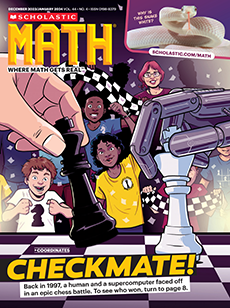Display the Scholastic election website at scholastic.com/election. Have students write the letters A, B, C, and D on separate pieces of paper. In the Civics in Action section, select Quizzes and present the “Can the President Do That?” quiz. Read each question aloud to the class and then have students hold up their answers. Afterward, share the link with the class and allow them to explore the website’s other content on their own.
CCSS: 6.RP.A.3.C, MP1, MP3, MP5
TEKS: 6.5.B
*Additional standards covered in Skill Builders.
